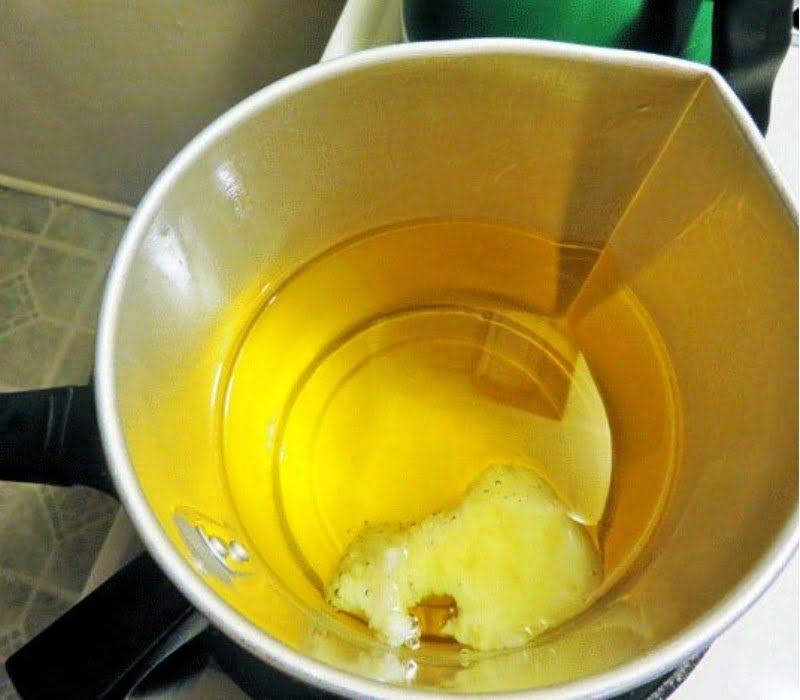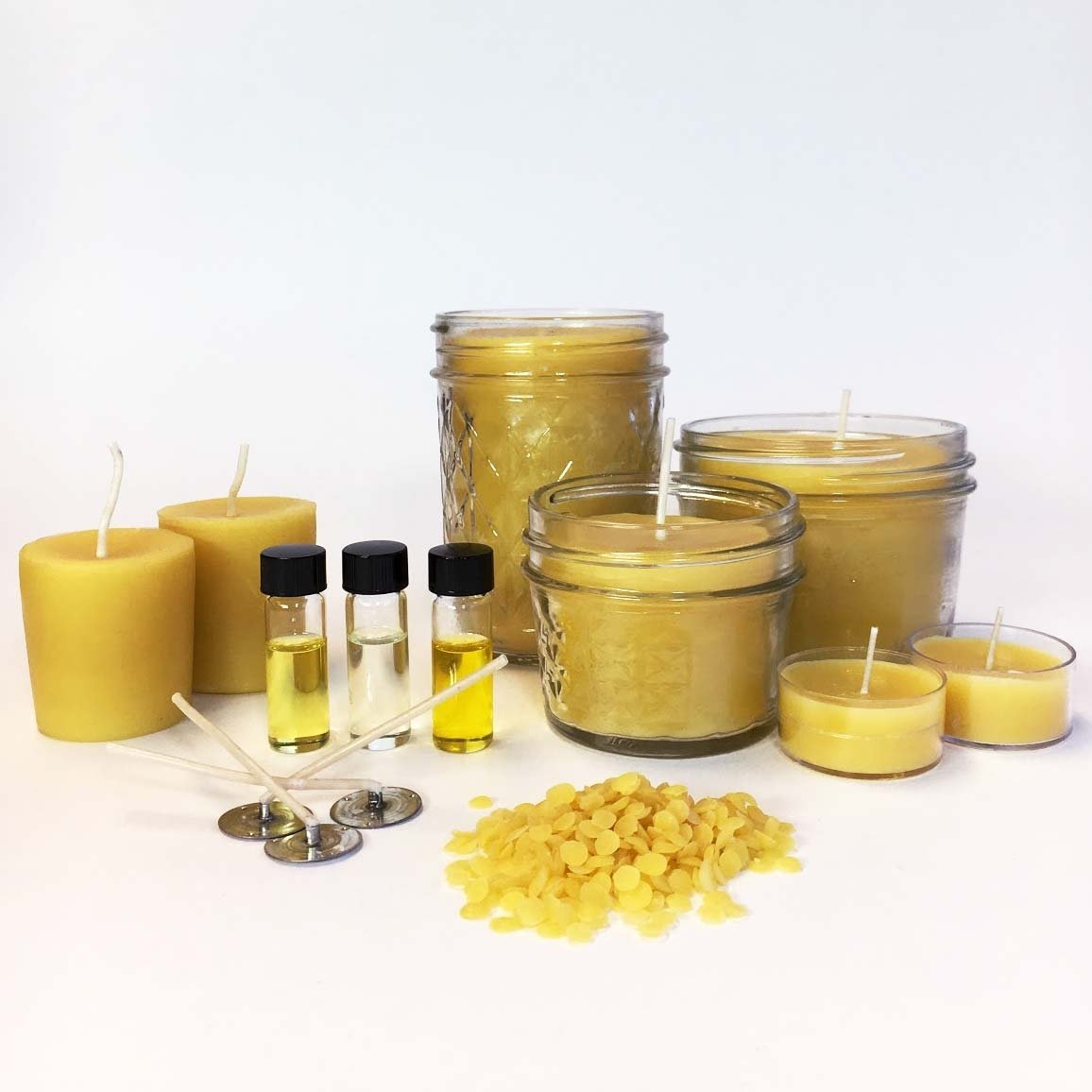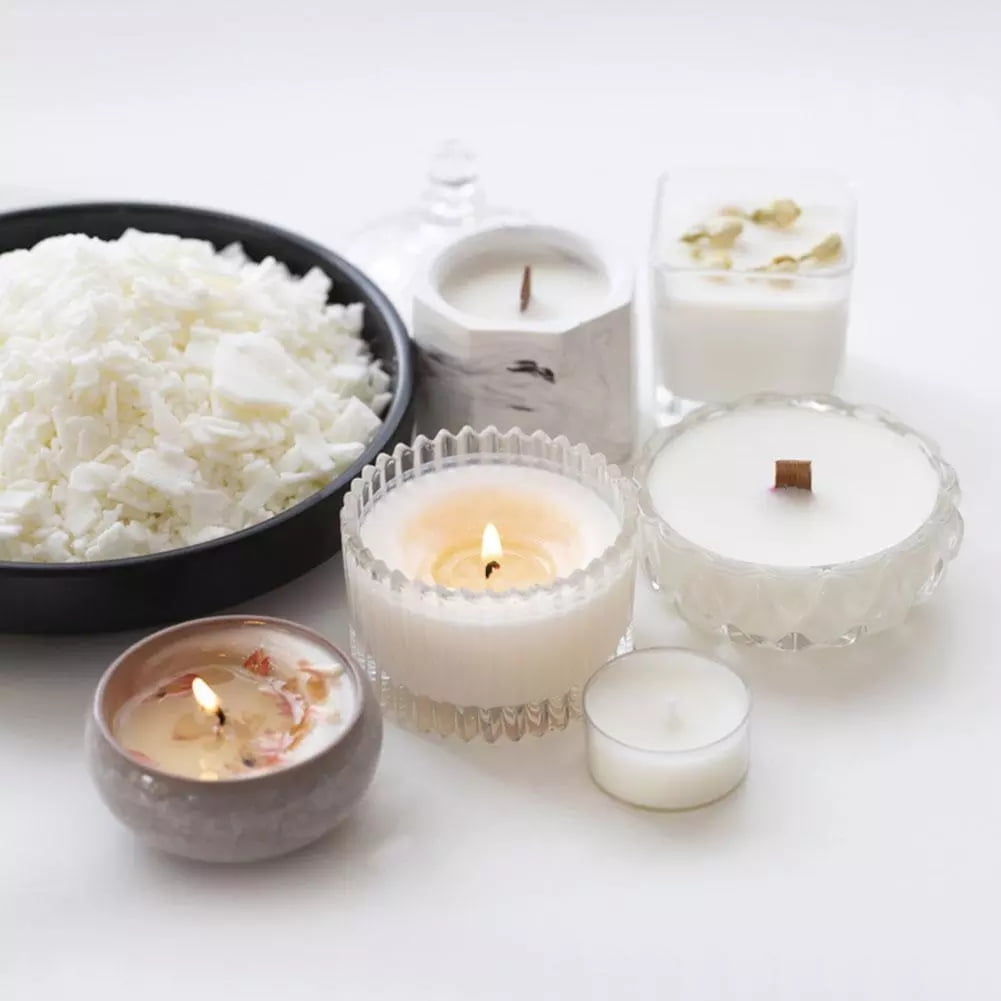Essential oils have become an essential ingredient in candle making, adding not only fragrance but also therapeutic properties to the final product. With scented candles growing in popularity, it’s important to understand how much essential oil is needed to create the desired scent and achieve optimal results. In this article, we will delve into the world of essential oils in candle making, exploring their benefits, understanding their usage, and providing tips for incorporating them effectively.
Did you know that scented candles are increasingly being used for stress relief, relaxation, and mood enhancement? The soothing aroma of a well-crafted scented candle can truly transform your surroundings and create a calming ambiance. As the demand for these aromatic products rises, so does the need to understand the art of scenting candles with essential oils.
Not only do essential oils provide delightful fragrances, but they also offer various therapeutic properties. From lavender’s calming effects to eucalyptus’ decongestant qualities, different essential oils can promote relaxation, improve focus, or even alleviate certain health conditions. By harnessing the power of these natural extracts in candle making, you can create a multi-sensory experience that uplifts both your space and your well-being.
In the following sections, we will explore everything you need to know about incorporating essential oils into your candle making process. From understanding the different types of essential oils commonly used to discussing factors that influence how much oil you should use, this article will equip you with valuable knowledge and practical tips for achieving optimal scent throw and creating beautiful scented candles. So let’s dive in and unlock the secrets of successful candle making with essential oils.
Understanding Essential Oils
Essential oils are highly concentrated liquids extracted from various parts of plants such as flowers, leaves, bark, and roots. These oils capture the natural aromatic compounds of plants and have been used for their therapeutic properties for centuries. When it comes to candle making, essential oils are a popular choice for adding fragrance to candles. They not only provide a pleasant scent but also offer potential health benefits through aromatherapy.
The Extraction Process
Essential oils are typically obtained through methods such as steam distillation, cold-press extraction, or solvent extraction. Steam distillation is the most common method used and involves passing steam over plant material to extract the volatile compounds. The resulting steam is then condensed into a liquid form, separating the essential oil from water.
Common Types of Essential Oils in Candle Making
There is a wide range of essential oils available that can be used in candle making. Some commonly used options include lavender, citrus (such as orange or lemon), eucalyptus, peppermint, and vanilla. Each type of essential oil brings its unique aroma and therapeutic benefits to the candle.
When choosing essential oils for candle making, it is important to select high-quality oils. Lower quality oils may not have a strong scent throw or may contain impurities that could be unsafe when burned. Look for pure essential oils that are labeled as suitable for candle making or aromatherapy use.
Choosing the Right Amount of Essential Oil
The amount of essential oil needed in candle making depends on various factors such as the type and size of the candle being made, desired scent intensity, and recommended usage rates for specific essential oils.
Different types of candles will require different amounts of fragrance to achieve optimal scent throw. For example, smaller candles like votives or tea lights will require less fragrance compared to larger jar candles. Additionally, personal preference for scent intensity should be taken into consideration. Some individuals prefer a subtle fragrance, while others may desire a stronger aroma.
It is important to consult the recommended usage rates for each essential oil being used. These rates can vary depending on the specific oil and the supplier’s guidelines. It is generally advised to start with a lower amount of essential oil and gradually increase if desired, as adding too much oil can negatively impact the candle’s burn performance.
Ultimately, finding the right amount of essential oil for your candles may require some experimentation and testing. Keep detailed records of your recipes and any adjustments made, so you can replicate successful fragrances in future batches.
Factors to Consider
Type and Size of the Candle
The type and size of the candle being made play a significant role in determining how much essential oil should be used. Larger candles will naturally require more essential oil to achieve the desired scent throw compared to smaller candles.
Additionally, different types of candles, such as container candles or pillar candles, may have varying amounts of wax that need to be scented adequately. It’s important to consider these factors when determining the appropriate amount of essential oil to use in your candle making.
Desired Scent Intensity and Fragrance Throw
Another crucial factor to consider when determining the amount of essential oil needed is the desired scent intensity and fragrance throw. Some individuals prefer a strong, intense aroma that fills a room quickly, while others may prefer a more subtle scent.
Take into account the preferences of your intended audience or yourself when deciding how powerful you want the fragrance to be. Keep in mind that certain essential oils have stronger scents than others, so you may need less of a potent oil compared to a milder one.
Recommended Usage Rates for Essential Oils
Each specific essential oil has recommended usage rates provided by suppliers or manufacturers. These guidelines are based on safety considerations and ensuring optimal performance of both the fragrance and the candle itself. It’s important to follow these recommendations as exceeding them can result in an overpowering scent or even affect the quality of your candle. Different essential oils have different volatility levels, so it’s necessary to take note of their individual usage rates for accurate measurements.
Considering these factors will help you determine the appropriate amount of essential oil required for your candle making project. However, it’s always best to start with a lower quantity and gradually increase it until you achieve your desired scent strength. Remember that personal preferences vary, so don’t be afraid to experiment and adjust according to your taste or feedback from testers. By considering these factors, you can ensure a well-scented and enjoyable candle making experience.
Measurement and Dilution
Measurement and Dilution
When it comes to incorporating essential oils into candle making, accurate measurement and dilution are crucial for achieving the desired scent strength and ensuring the safety of the final product. Properly measuring essential oils allows for consistency in fragrance throw and helps avoid wasting expensive oils. In addition, diluting essential oils helps prevent skin sensitivities or allergic reactions when coming into contact with the candles.
There are different measurement units used in candle making, including percentages, drops, and weight. Percentages are commonly used by candle makers as they provide a standardized way to calculate the amount of essential oil needed based on the total weight of the wax. For example, if you want to use 5% of essential oil in a 16 oz (454 g) candle, you would need to use 0.8 oz (22.7 g) of essential oil.
| Candle Size | Desired Scent Strength | Recommended Essential Oil Amount |
|---|---|---|
| 4 oz (113 g) | Light | 10-15 drops or 1-2% |
| 8 oz (227 g) | Moderate | 20-25 drops or 2-4% |
| 16 oz (454 g) | Strong | 30-40 drops or 4-6% |
Remember, a little goes a long way with essential oils, especially since they can be quite potent. It is better to start with a smaller amount of essential oil and gradually add more if necessary, rather than overpowering the candle with too much fragrance. By carefully measuring and diluting essential oils, candle makers can create beautifully scented candles that provide a delightful aroma without compromising safety.
Essential Oil Safety
When working with essential oils in candle making, it is crucial to prioritize safety. While they offer numerous benefits and therapeutic properties, these potent oils can also pose risks if not handled appropriately. By following safety guidelines, you can enjoy the aromatic pleasures of scented candles while ensuring a safe and enjoyable experience.
Firstly, it is important to be aware of potential risks and take necessary precautions. Essential oils are highly concentrated substances that can cause skin sensitivities or allergies if used improperly. Before incorporating any new oil into your candles, perform a patch test on a small area of your skin to check for adverse reactions. If any irritation occurs, avoid using that particular oil.
Additionally, when handling essential oils during candle making, keep in mind their flammability. As these oils are volatile compounds derived from plants, they can potentially ignite if exposed to an open flame or high temperatures. It is important to maintain proper ventilation in your workspace to minimize the risk of fire hazards.
To prevent accidents and ensure accurate measurements, always use appropriate storage containers and tools for handling essential oils. Avoid using glass containers that may shatter or break easily when working with these potent liquids. Invest in quality droppers or pipettes for accurate measurement, as even minor variations could significantly impact the scent throw and overall performance of your candles.
Remember to store your essential oils properly to maintain their potency over time. Keep them away from direct sunlight and extreme temperatures to preserve their therapeutic properties as well as their fragrance integrity. Many essential oils come in dark amber bottles, which effectively protect them from light exposure.
By prioritizing safety when working with essential oils, you can confidently explore their aromatic possibilities in candle making. With proper precautions and careful handling, you can enjoy the benefits of scented candles while keeping yourself and your surroundings safe from potential risks.
Testing and Experimentation
In candle making, testing and experimentation with different essential oil combinations and ratios is an exciting part of the creative process. It allows you to customize your scents, find the perfect balance, and create unique experiences for yourself or potential customers. While there are recommended usage rates for essential oils, everyone’s scent preferences vary, so experimenting can help you tailor the aroma to your liking.
To begin experimenting, it’s essential to conduct scent tests during the candle making process. This involves creating small test candles using different ratios of essential oils to determine the desired scent strength and fragrance throw. Start by making a few samples with varying amounts of essential oil added to the wax.
Keep in mind that more is not always better; sometimes, a subtle aroma can be just as pleasing as a strong one. Light these sample candles individually in a controlled environment to evaluate their scents.
Documenting your findings throughout the experimentation process is crucial. It helps you keep track of what works and what doesn’t so that you can replicate successful combinations in the future or make adjustments accordingly. Pay attention to both personal preferences and feedback from testers if you plan on selling your candles. Keep records of which essential oils were used, their ratios, and any additional notes about the final scent throw.
Remember that when adjusting the amount of essential oil used in your candles, less is often more. Small increments or drops can make significant differences in scent strength without overpowering your space or causing irritation to those with sensitivity to strong fragrances. Each essential oil has its own recommended usage rate provided by manufacturers or suppliers, which should also be taken into consideration during experimentation.
By embracing testing and experimentation, you have an opportunity to unleash your creativity in candle making while discovering scents that are truly unique to you. So don’t be afraid to take risks, explore new combinations, and create signature aromas that will leave a lasting impact on anyone who experiences them.
Troubleshooting
When it comes to using essential oils in candle making, there may be some common issues that arise. However, with a little troubleshooting and problem-solving, these challenges can be overcome to ensure the best possible scent throw and fragrance diffusion in your candles.
- Poor Scent Throw: One of the most frustrating problems that can occur is when your candle doesn’t emit a strong enough scent when burned. This can be caused by several factors, including using an insufficient amount of essential oil or not choosing oils with high enough intensity.
To troubleshoot this issue, consider increasing the amount of essential oil used in your candles, following the recommended usage rates provided by the oil manufacturer. Additionally, experimenting with different oil combinations or opting for stronger scents may help enhance the overall aroma. - Inadequate Fragrance Diffusion: Another common problem is when your candle’s fragrance doesn’t spread evenly throughout the room or space. This could be due to poor-quality fragrance oils or improper wick size.
If you’re experiencing this issue, try using high-quality essential oils from reputable suppliers and ensuring that you have selected a wick appropriate for the diameter and type of wax being used. Consider using fragrance oils specifically formulated for candle making for optimal diffusion and even distribution of scent. - Excessive or Weak Aroma: Achieving the perfect balance of scent strength can sometimes prove challenging. If your candle has an overpowering or overwhelming aroma, it could be because too much essential oil was added during the process.
To rectify this situation, reduce the amount of oil used in future batches or dilute it more by adjusting your measurement ratios. On the other hand, if your candle’s aroma is too weak or barely noticeable when burned, you might need to increase the quantity of essential oil used.
Remember that troubleshooting in candle making is often a matter of trial and error. Every wax blend and fragrance combination can behave differently, so it’s essential to keep detailed notes of your experiments. This will help you identify patterns and trends, allowing for better adjustments in the future. Stay patient and persistent, as finding the right balance of essential oil in your candles may take some time and experimentation.
Best Practices for Using Essential Oils
When it comes to incorporating essential oils into candle making, following best practices is key to achieving the desired scent and ensuring a safe and enjoyable experience. Here are some important tips and guidelines to consider:
- Choose High-Quality Essential Oils: To achieve the best results, it is crucial to select high-quality essential oils. Look for oils that are pure, undiluted, and sourced from reputable suppliers. Be cautious of synthetic fragrances labeled as “perfume oil” or “fragrance oil,” as they may not provide the same therapeutic benefits as natural essential oils.
- Measure Accurately: Accurate measurement of essential oils is important for both safety and desired scent strength. There are different measurement units used in candle making, including percentages, drops, and weight. It is recommended to follow established guidelines or recipes provided by reputable sources to ensure proper measurements.
- Dilute Properly: Essential oils should be diluted before adding them to the candle wax. This helps prevent any potential irritation or adverse reactions when the candles are burned. A common dilution ratio is about 6-10% of essential oil per pound of wax, but this can vary depending on the specific oil and desired fragrance intensity. It is advisable to consult specific usage rates provided by the essential oil supplier.
- Conduct Scent Tests: Throughout the candle making process, perform scent tests to gauge if the fragrance strength meets your preferences. Heat can alter the intensity of essential oils, so make sure to evaluate their aroma once the candles have cooled down and fully set. Adjustments can be made by adding more or less essential oil in subsequent batches until the desired scent throw is achieved.
- Store Properly: To maintain the potency of your essential oils, store them in a cool, dark place away from sunlight and heat sources. Most oils have a shelf life of around 1-2 years, but this can vary depending on the specific oil. Keep the oils tightly closed and ensure they are out of reach of children or pets.
Remember to always prioritize safety when using essential oils. Here are a few important safety guidelines to keep in mind:
- Perform a patch test to check for any skin sensitivities or allergies before using essential oils directly on your body.
- Ensure proper ventilation in your workspace when working with essential oils to avoid inhaling excessive fumes.
- Essential oils are highly flammable, so exercise caution when handling them near open flames or heat sources.
By following these best practices, candle makers can create beautiful and aromatic candles while enjoying the therapeutic benefits of essential oils. Don’t be afraid to experiment and create unique scent combinations to make your candles truly one-of-a-kind. Happy candle making.
Conclusion
In conclusion, essential oils play a significant role in candle making due to their aromatic benefits and therapeutic properties. Throughout this article, we have discussed the understanding of essential oils, factors to consider when determining the amount needed, measurement and dilution techniques, safety precautions, testing and experimentation, troubleshooting common issues, and best practices for using essential oils in candle making.
It is important to remember that the type and size of the candle being made, desired scent intensity, specific essential oils being used, and recommended usage rates all contribute to determining the appropriate amount of essential oil to use. Accurate measurement is crucial in order to achieve the desired scent throw efficiently.
We have also emphasized the importance of safety when handling essential oils. Precautions such as performing patch tests and ensuring proper ventilation can help minimize any potential risks associated with skin sensitivities, allergies, or flammability.
Ultimately, using essential oils in candle making provides an opportunity for creativity and personalization. By experimenting with different combinations and ratios of essential oils, individuals can create unique scents that cater to their preferences.
Frequently Asked Questions
How much essential oil do you put in candle wax?
The amount of essential oil to put in candle wax can vary depending on personal preference and the strength of the fragrance used. In general, it is recommended to use about 1 ounce (30 milliliters) of essential oil per pound (450 grams) of candle wax.
However, this ratio can be adjusted based on the desired scent intensity. It’s important to keep in mind that adding too much essential oil can cause problems with the burning performance of the candle, such as excessive smoking or a weakened wick.
What is the ratio of essential oils to soy candles?
The ratio of essential oils to soy candles typically follows a general guideline of 6-10% fragrance load for optimal scent throw. To calculate this ratio, you would take the weight of your soy wax and multiply it by the desired percentage range (0.06 to 0.1).
For example, if you’re using 1 pound (450 grams) of soy wax and aiming for a 8% fragrance load, you would multiply 1 pound by 0.08 to get 0.08 pounds (or approximately 36 grams) of essential oils.
How do you measure essential oils for candles?
To measure essential oils for candles accurately, it’s best to use a scale that measures in ounces or grams. This allows for precise measurements and consistency between batches.
If you don’t have a scale available, you can use measuring spoons or droppers marked with milliliter measurements as an alternative method. When measuring essential oils using these tools, ensure that they are clean and dry before each use to prevent cross-contamination between scents or unwanted dilutions from any residual substances left behind.

Welcome to my candle making blog! In this blog, I will be sharing my tips and tricks for making candles. I will also be sharing some of my favorite recipes.





